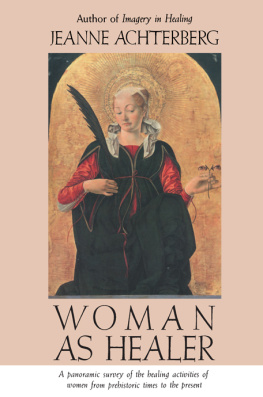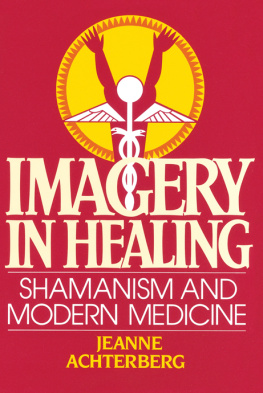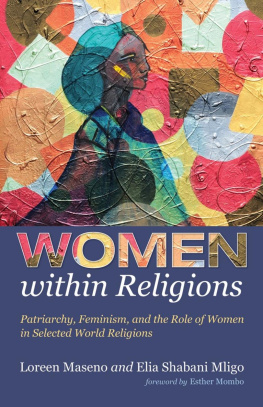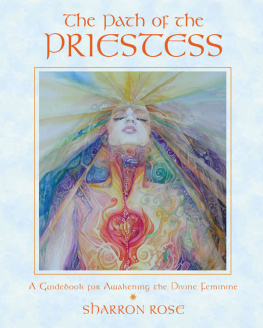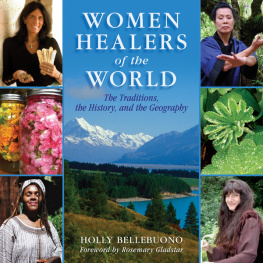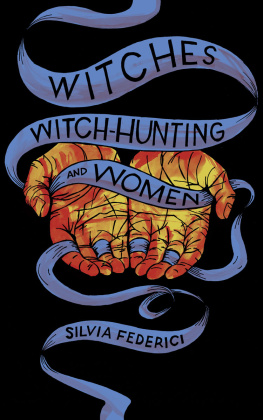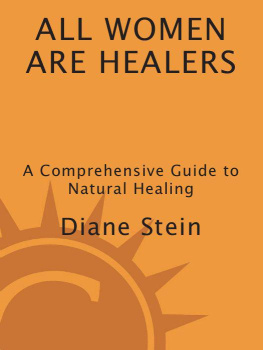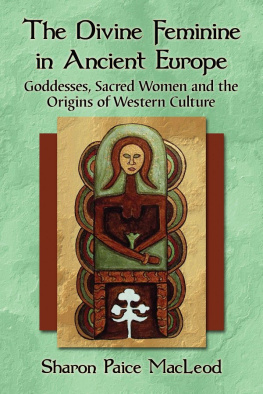ABOUT THE BOOK
This groundbreaking work examines the role of women in the Western healing traditions. Drawing on the disciplines of history, anthropology, botany, archaeology, and the behavioral sciences, Jeanne Achterberg discusses the ancient cultures in which women worked as independent and honored healers; the persecution of women healers in the witch hunts of the Middle Ages; the development of midwifery and nursing as women's professions in the nineteenth century; and the current role of women and the state of the healing arts, as a time of crisis in the health-care professions coincides with the reemergence of feminine values.
JEANNE ACHTERBERG, Ph.D., (19422012) was a professor of psychology at the Institute of Transpersonal Psychology (now Sofia University) and served as associate professor and director of research in rehabilitation science at Southwestern Medical School in Dallas.
Sign up to learn more about our books and receive special offers from Shambhala Publications.

Or visit us online to sign up at shambhala.com/eshambhala.
Woman as Healer
Jeanne Achterberg

Shambhala
Boston & London
2013
Shambhala Publications, Inc.
Horticultural Hall
300 Massachusetts Avenue
Boston, Massachusetts 02115
www.shambhala.com
1990 by Jeanne Achterberg
All rights reserved. No part of this book may be reproduced in any form or by any means, electronic or mechanical, including photocopying, recording, or by any information storage and retrieval system, without permission in writing from the publisher.
The Library of Congress catalogues the hardcover edition of this work as follows:
Achterberg, Jeanne.
Woman as healer / Jeanne Achterberg.
p. cm.
Includes bibliographical references.
eISBN 978-0-8348-2871-1
ISBN 0-87773-444-5 (alk. paper)
ISBN 0-87773-616-2 (pbk.)
1. Women in medicine. 2. Women healers. I. Title.
R692.A24 1990
610.82dc20
89-43314
CIP
To Frank: gentle and compassionate healer
Contents
RESEARCHING AND WRITING the story of woman as healer was a very personal journey, facilitating a dramatic mid-life, mid-career transformation. It became necessary for me to understand and express more fully the past, present, and potential of women healers, as well as take the time to look with clarity at my own experiences as a woman, a healer, and a scientist. Information was difficult to come by, and I was both empowered and disturbed by what I found. The emotional impact of the project, as well as its girth and complexity, required the goodwill, inspiration, and able scholarship of many individuals.
My husband, Frank, showed concern and infinite patience, and provided me with the opportunity to leave full-time academic work in order to complete this task. He facilitated my living and writing for extended periods in the majestic solitude of Big Sur, where I experienced the healing that comes from being connected to the earthone of the underlying themes of the book. As our bonded relationship matured and deepened over these years of our life-change, I was profoundly and repeatedly reminded that the healing of people, our relationships, institutions, and indeed, our world, depends entirely on loving partnership between men and women, and on honoring the traditional values associated with both sexes.
The work itself was enriched by women healersstudents, mentors, colleagueswith whom I have had contact over the years. Many women connected with me for the first time after learning of the book-in-progress. I am touched by their strength, their stories, and their wisdom. I continue to be in awe of the instant recognition we have for one another, regardless of professional affiliation. I owe a very special thanks to Mary Stowell, Gail Swift, and Susan Luck, who reviewed earlier drafts and continue to bring new materials on this topic to my attention. They, Rachel Naomi Remen, Angie Arrien, Marion Woodman, Joan Borysenko, Stephanie Simonton, Barbie Dossey, Dee Krieger, and legions of nurse healers inspired me by their examples.
Furthermore, I owe debts of scholarship to many contemporary writers, as well as several scholars of centuries past who sought to make womens experience known. I have noted their work throughout the text. In particular, the passionate and careful work of Jules Michelet, Matilda Gage, Katherine Hurd-Mead, and Lynn Thorndike, mostly forgotten or out-of-print, deserves special recognition. Hopefully, womens experience will not always be buried in dusty archives or obscure tomes.
The notion of adding balance to healing by the inclusion of the traditional feminine principles and practices was supported by several men who see this as integral to the field of medicine. I would especially like to thank Andrew Weil for reviewing the botanical aspects of the manuscript, and Michael Samuels and Larry Dossey for their constant encouragement and their eminent and balanced commentaries in the field of medicine.
Finally, I am grateful for the visionary editing of Emily Hilburn Sell. We have now worked together on two books, and both have been nurtured, clarified, and greatly enhanced by her excellent advice.
WOMEN HAVE ALWAYS been healers. Cultural myths from around the world describe a time when only women knew the secrets of life and death, and therefore they alone could practice the magical art of healing. In crises and calamity, or so some of the stories go, womens revered position as keepers of the sacred wisdom was deliberately and forcibly wrested away from them. At other places, in other eras, womens legal right to practice the healing vocations was gradually eroded by changing mores and religious dogma.
Today, over 80 percent of the workers in the health system in the United States are women. Without women, hospitals, laboratories, and social agencies could not operate. Nevertheless, women in general have limited professional independence and authority, and are, in some instances, legally constrained in practicing the skills associated with their training. For most of the history of the Western world, women who worked as healers in their own right have been exceptional people who defied custom in order to share their creative and intellectual gifts. More often, women healers have simply joined a large and exploited corps of handmaidens.
The dissonance between womens talents and womens fate bears closer attention, as it reflects the evolution of institutions that lack the feminine voice. The absence of balance in these institutions has perpetrated a crisis that now extends alarmingly through all levels of healthfrom the health of cells, tissues, mind, and relationships, to the health of the environment upon which life itself is dependent.
THIS BOOK EXAMINES the role of the feminine in the Western healing traditions. With all respect to the compassionate and gentle men who identify with so many aspects of women healersand to the complex continuum of gender itselfI have written about woman as woman. Having a womans body, being faced with myriad social and biological proscriptions as well as the magnificient abilities associated with that body, creates a uniqueness that need not be generalized or diluted in any way.
As healers, we crave empowerment from the past. Yet, for women, the past has not been well toldand for good reason. Women were often forbidden to speak or write in Latin, the language of the scholar and of the professions. The information presented here had to be carefully teased out of a few surviving works written by women healers, from relics and artifacts, from myth and song, and from what was written about women. The experience of women healers, like the experience of women in general, is a shadow throughout the record of the world that must be sought at the interface of many disciplines: history, anthropology, botany, archaeology, and the behavioral sciences.
Next page
